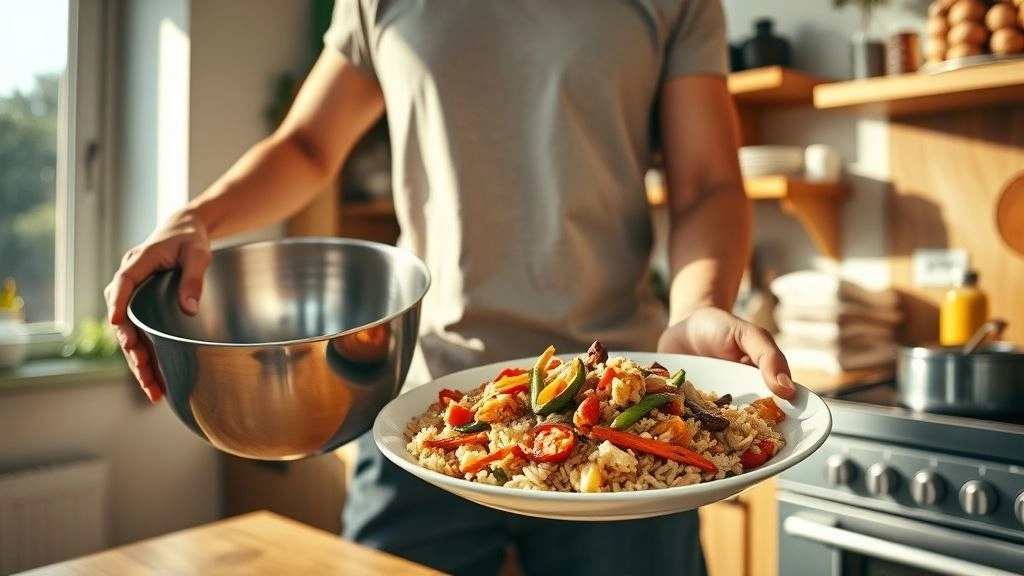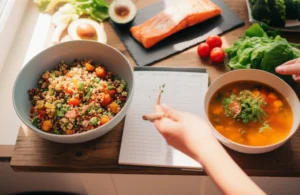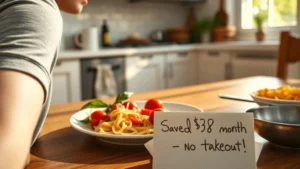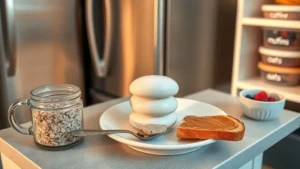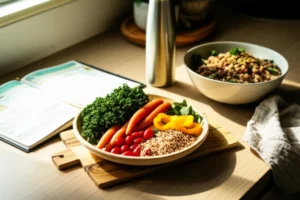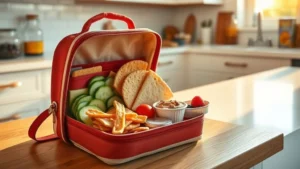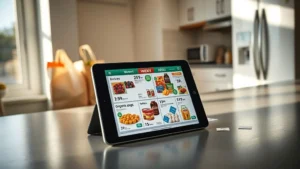Have you ever glanced at your bank account after a month of eating out and thought, “Where did all my money go?” It’s like those sneaky $10 lunches or last-minute takeout runs disappear into a black hole without you even realizing it. Keep ignoring that, and soon it feels like your paycheck vanishes faster than your favorite snack at midnight.
But hey, what if I told you swapping just a few meals from the restaurant to your kitchen could seriously fatten your wallet, without turning your life upside down? Yeah, cooking at home really is cheaper. Stick with me for a few minutes—I’ll share some friendly truths, real stories, and easy tips that make saving money deliciously doable.
Hidden Eating Costs
Why Your $10 Meal Feels Like $20
Eating out feels convenient, right? Quick, no mess, someone else does the dirty work. But there’s a catch: that seemingly affordable $10 sandwich? Add tax, tip, maybe a drink or dessert—and suddenly, you’re looking at $15 or more.
And that’s just one meal. According to research, the average inexpensive restaurant meal costs around $16.28, whereas making a comparable meal at home costs just $4.23. That’s nearly 285% more expensive when eating out! Over a whole year, that gap can add up to over $13,000 in extra expenses if you eat out regularly.
| Meal Type | Eating Out Cost | Home-Cooked Cost | Approximate Savings |
|---|---|---|---|
| Burger & Fries | $12 | $3 | $9 |
| Chinese Takeout | $15 | $4 | $11 |
| Pizza Slice | $5 | $1 | $4 |
See? That $5 sub that sounds cheap can actually buy you several sandwiches made at home. A fellow Redditor explained it well—cooking at home is almost always cheaper if you actually eat the food you buy and use leftovers wisely. And remember, restaurants need to make a profit, so the price reflects not just the food, but also staff wages, rent, and other overheads.
Want to dive deeper? Check out some thoughts in the Eating out vs eating at home pros and cons, which break down these hidden costs perfectly.
Home Cooking Wins
What’s the Deal With Bulk Buying?
One of the cool perks of cooking at home? You get to buy in bulk. Those bags of rice, beans, and frozen veggies aren’t just budget-friendly—they last forever and can stretch into multiple meals.
Take, for example, popular dishes like homemade pad thai or sheet pan chicken fajitas, which a food writer priced out. Making them at home costs a fraction of the takeout price. This little money trick isn’t just about food costs, though—scientific studies tell us that people who cook at home more often actually eat healthier diets without spending extra.
A University of Washington study found that home-cooked dinners were linked to better “Healthy Eating Index” scores, and better nutrition without a significant bump in grocery bills. So it’s not just your bank account winning—you’re doing your body a solid too.
That’s why the Why cooking at home is cheaper essay breaks down how being a little savvy in the kitchen also means healthier meals on a budget.
Leftovers: Your Frugal Best Friend
Here’s a juicy secret: leftovers can save your sanity and dollars. When you cook a roast chicken, don’t toss the scraps. Turn them into soup, sandwiches, or salads the next day. Purchasing ingredients for multiple meals reduces waste, which can otherwise quietly inflate your grocery bills.
And if you’re not in the mood to cook five nights a week, no worries. Even just three home-cooked meals weekly, sprinkled between leftovers and store-bought staples, can slice your spending—and improve your diet.
Cooking Solo
Is It Cheaper To Cook or Eat Out When You’re Alone?
If you live solo, you might think, “Hey, cooking for one sounds tough and expensive.” Actually, it’s not that bad… if you plan right.
Buying ingredients on sale, making large batches of simple staples like spaghetti sauce or soup, and freezing portions means you don’t have to waste food—or money.
One person shared on Quora about finding real savings by making comfort foods in bulk and freezing them in single portions. For some things, like fancy Asian dishes with a million spices, it may cost more to buy all those ingredients than eating out occasionally. But for everyday meals? Cooking at home usually comes out on top.
| Meal Option | Cost for One | Time Required | Bonus |
|---|---|---|---|
| Fast Food | $8–12 | 10 mins | Convenience but less healthy |
| Home Stir-Fry | $3–5 | 20 mins | Leftovers and control |
And if you haven’t yet, give a read to Is cooking at home healthier —it’s not just about money, but the better choices you can make when you’re in charge of ingredients.
Busting Myths
Eating Out: Is It Really Cheaper Sometimes?
I get it. Sometimes eating out feels way easier—no chopping, no washing, no thinking. But can it actually be cheaper? Mostly no, but there are exceptions.
If you’re making complicated dishes that call for exotic spices, expensive sauces, or fancy gadgets, buying those special ingredients just to make one meal can tip the scales. On the other hand, some chain or midscale restaurants might actually charge just a bit less—but usually, not enough to beat your homemade meal’s value.
U.S. News and other budgeting gurus agree that cooking simple, tasty meals at home beats fast food in cost per serving—especially when you’re smart about ingredients. And your health likely wins too, since you control what’s going on your plate.
Sure, sometimes you’ll want to treat yourself out—absolutely! But remember, regularly dining out can tack on big expenses sitting quietly in your budget. Research on spending habits shows Americans can save hundreds to thousands annually by cooking more.
Interested in the nitty-gritty stats? The Eating out vs cooking at home Statistics offer a deep dive into those numbers if you want to nerd out.
Easy Swaps to Save
Start Small, Save Big
You don’t have to be a master chef or spend hours fretting over recipes. Simple swaps, like choosing frozen instead of fresh when it’s cheaper, picking up pantry staples on sale, or batch cooking once a week go a long way.
Investing $20 in versatile ingredients can feed you healthy, satisfying meals throughout the week. Bonus? Cooking can be fun, creative, and surprising.
Oh, and here’s a little tip—getting an air fryer or investing in a slow cooker might seem pricey upfront but can help recreate takeout favorites at home, saving lots in the long run.
Wrapping It Up
So there you have it. Cooking at home is cheaper, healthier, and better for your budget than eating out more often than you realize. It’s not about perfection or cooking dinner every single night—just those little shifts, using leftovers, buying smart, and embracing simple meals pay off big.
Remember the University of Washington study? Frequent home cooking boosts diet quality without extra cost. And those Reddit stories? They prove you can feed your family well without breaking the bank.
Next time you’re tempted by that $15 takeout order, pause and think: Could that money stretch into three meals if you cooked at home? Take a shot at it. Your wallet and your taste buds will thank you.
Feel like sharing your frugal cooking wins or favorite budget-friendly recipes? Jump into the conversation and check out more tips at Why cooking at home is cheaper essay. Let’s keep saving—and eating—well, together.

